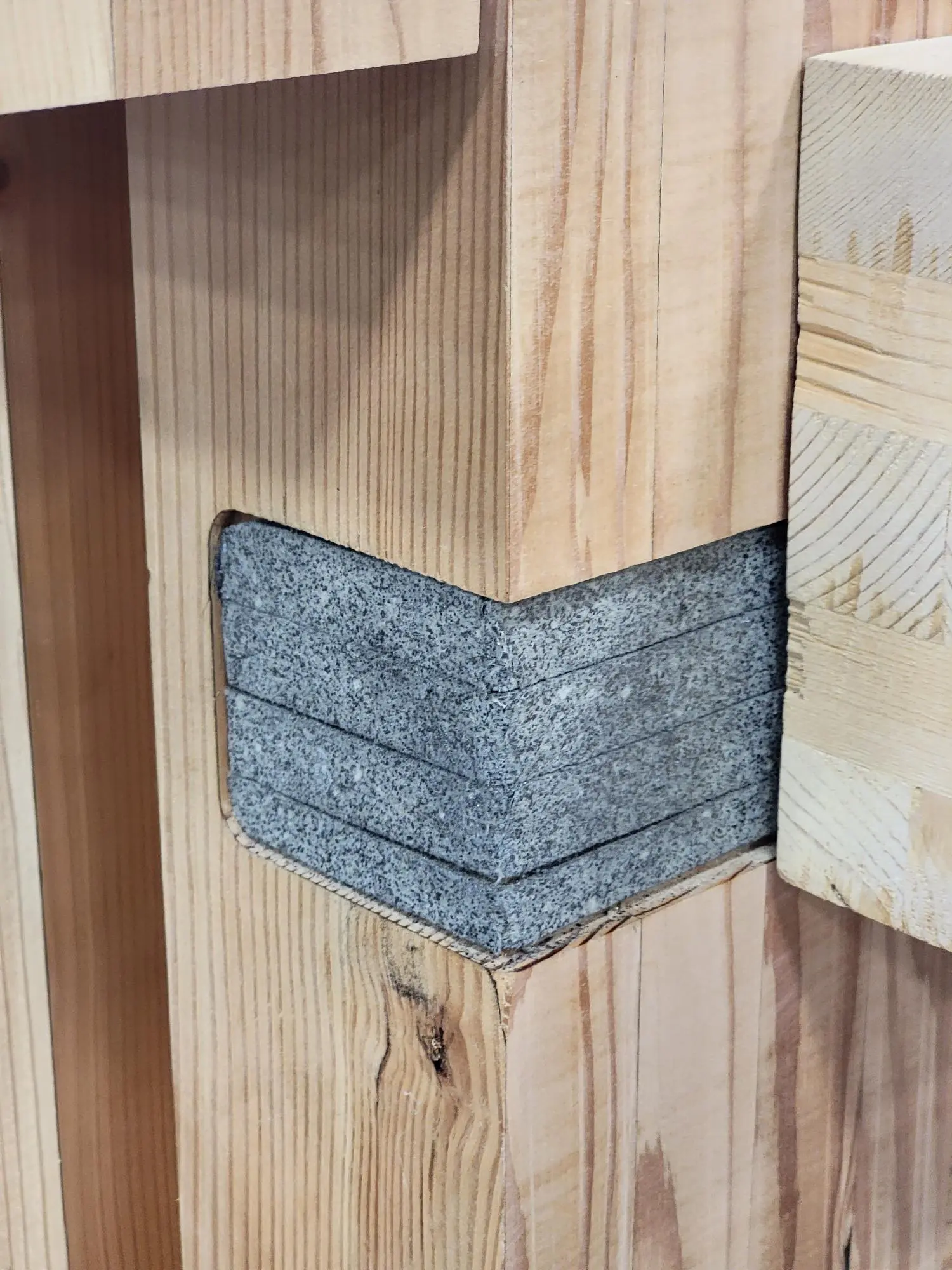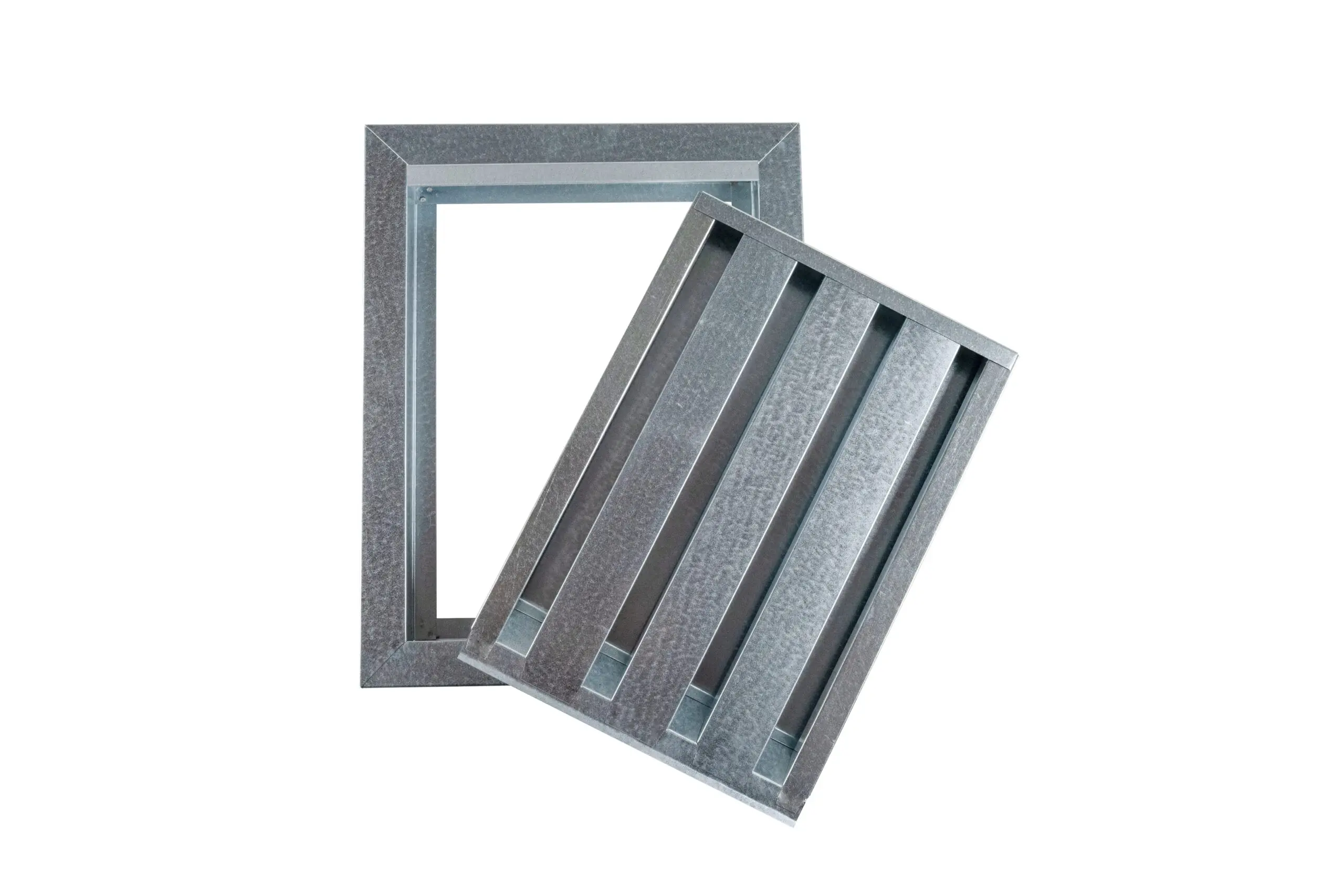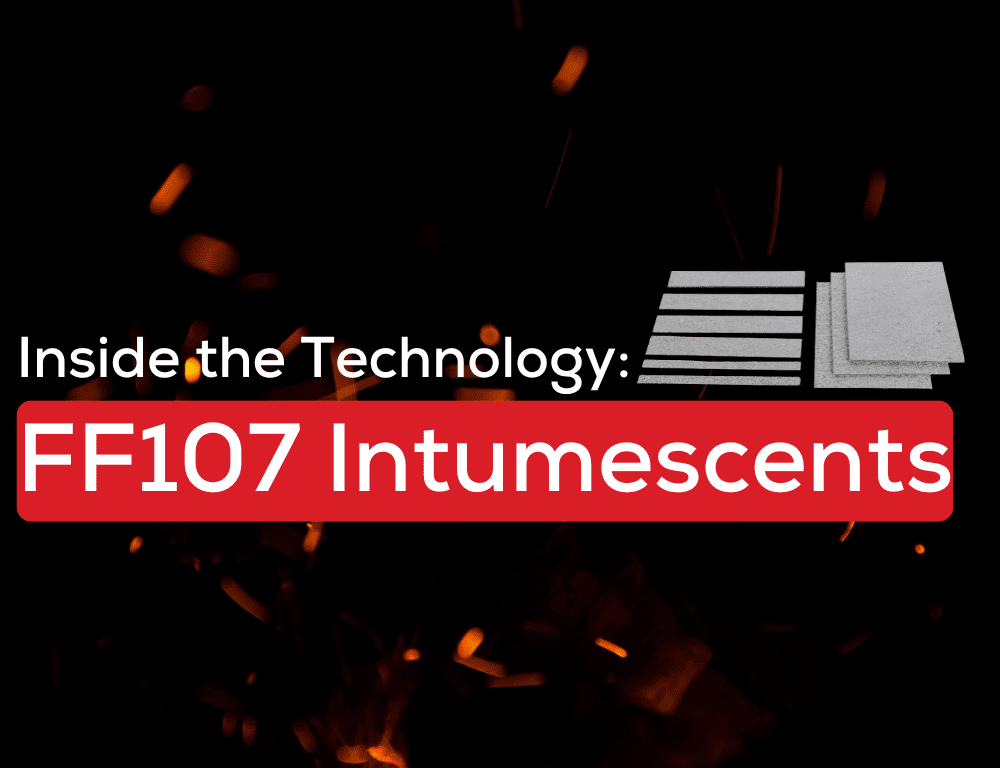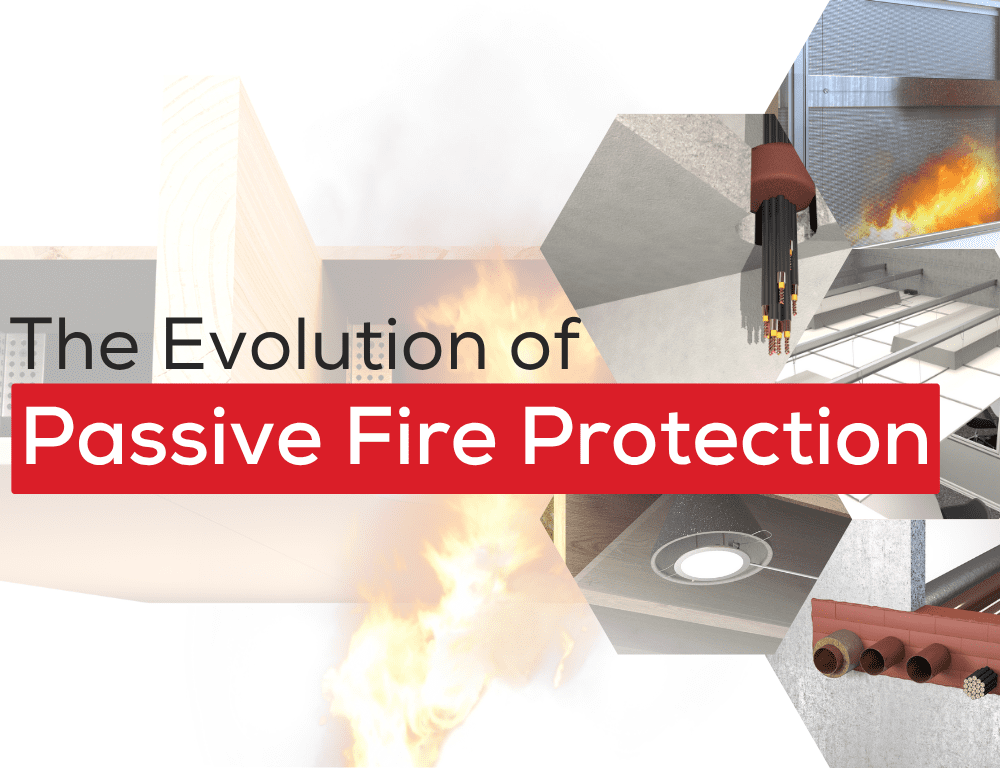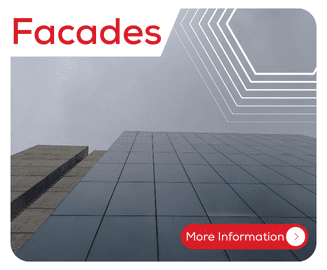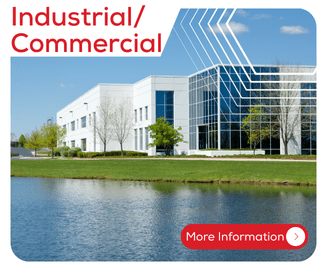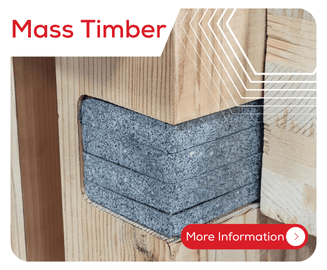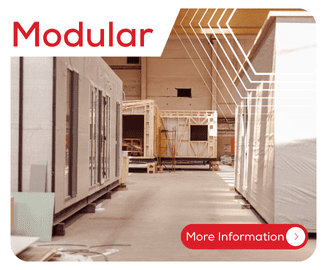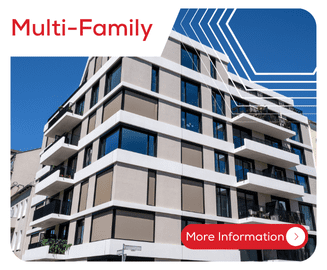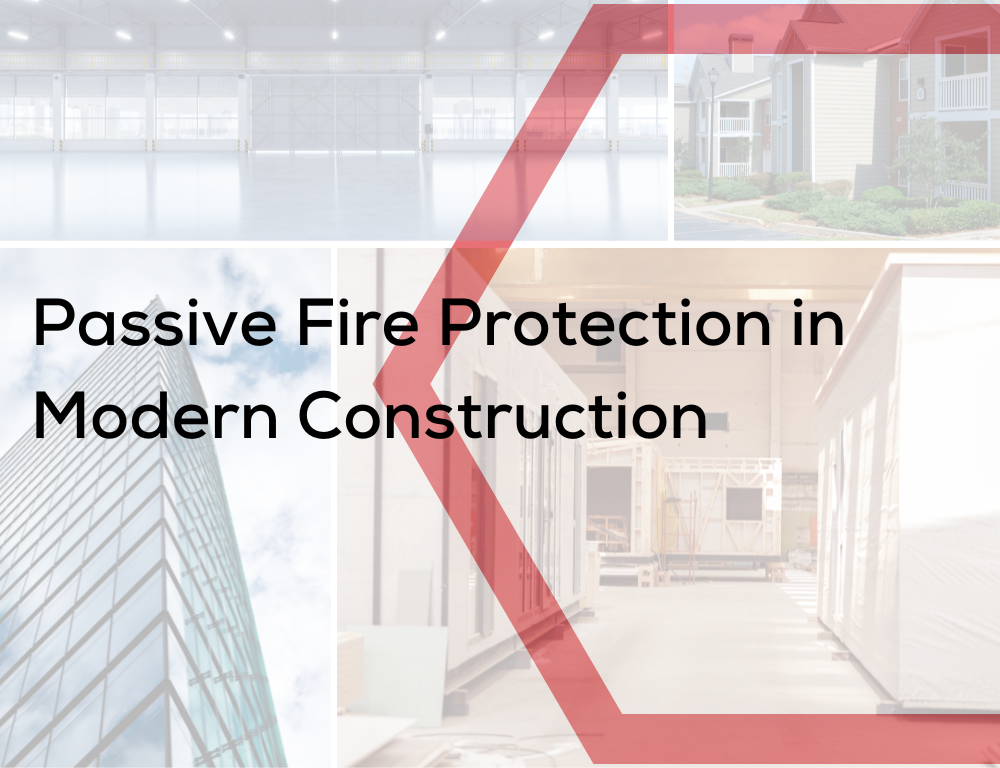Learn More About the Standards of Passive Fire Protection in Modern Construction Practices.
Growing popularity for a major state university. Families relocating to the suburbs outside a rapidly developing city. Going demand for energy conservation practices in construction applications. For the past several decades, the United States has been swiftly developing its cities and towns, whether its repurposing outdated building structures, or constructing new facilities. Resulting from the rapid development, a multitude of modern construction practices, such as modular and mass timber construction, has emerged into the construction landscape.
As these practices appear in the construction scene, it is imperative that building code and life safety requirements are enforced and met. With passive fire protection upholding the safety of the lives and properties within our communities, building professionals and code officials need to properly identify the required firestopping solutions for each construction practice. In response, Tenmat has formulated an easy guide, which provides an overview of current construction applications and its associated passive fire protection requirements. Explore below and be proactive in protecting our communities from the disaster of a fire outbreak.
Overview
Testing 1, 2, 3 – Do You Have Life Safety? Advanced Passive Fire Protection in Audio Applications.
Whether you are installing in-ceiling loudspeakers in a newly renovated home cinema or mounting in-ceiling intercoms in new construction healthcare facilities, it is crucial that a high level of life safety is maintained. When these ceiling openings are left unprotected, flames, smoke, and heat are able to travel at an increased rate – jeopardizing the lives and property of these infrastructures. In response, passive fire protection solutions, such as Tenmat’s Fire Rated Enclosures, are designed to reinforce the integrity of the ceiling/floor assembly – causing the fire to be contained and allowing for additional evacuation time for occupants.
A blend of sound isolation, easy installation, and passive fire protection, TENMAT created the FF109-FRSC, a one-hour fire rated speaker cover. The FF109-FRSC 1 Hour Fire Rated Speaker is a dome-shaped intumescent enclosure which has been specifically designed to help maintain the integrity of fire-resistance rated ceiling/floor assemblies for one hour when penetrated by in-ceiling speakers. In addition, the sound absorbing properties of the propitiatory intumescent material enhance the acoustic performance of the speaker’s housing – allowing for a level of sound isolation.
If you want to learn more about the additional forms of passive fire protection in audio applications, please visit Audio Sector Page.
Ctrl+Alt+Delete Unsafe Facilities: Passive Fire Protection in Data Centers.
In the Digital Age, power-storage and data centers play a pivotal role in the storage, management, and processing of extensive digital information and computer systems. These facilities boast a sophisticated design, incorporating multiple storage devices, solid-state drives, and optical storage to cater to diverse and high-level client demands.
Given the substantial volume of through-penetration applications in these facilities, involving various electrical cables and wires, Tenmat has developed several UL Classified firestopping solutions to meet these specific demands. The FF160 Fire Protection Plug, a two-hour through-penetration firestop system, can be retrofitted within power and control cables, telecommunications cables, and optical fiber cables through solid floors or systems. UL Classified for a maximum of 60% cable fills in openings up to 5” diameter in concrete, this solution is easily customizable, making it ideal for power-generating energy stations. Additionally, our FF260 Fire Protection Block, a preformed, intumescent firestop block, is formulated to seal penetrations with cables, cable trays, cable bundles, metal pipes, and mixed penetrations, ensuring flame spread and smoke are halted for 120 minutes.
To gain additional knowledge about implementing the correct forms of passive fire protection into date centers, please visit Data Center Sector Page.
Educating Building Professionals About Advanced Firestopping Solutions in Educational Institutions.
Educational buildings, such as elementary and high schools (K12), university lecture halls, and vocational schools, are the starting grounds for the development of our current and future generations. One of the primary and most profound significances of passive fire protection is its capacity to save lives. In the unfortunate event of a fire outbreak, passive fire protection measures, such as fire-resistant materials, doors, and enclosures, act as a barrier, containing the spread of flames and smoke. This containment provides vital time for evacuation procedures to take place, ensuring the safety of students and staff. It is imperative to remember that in the chaotic atmosphere of a fire, seconds can make a crucial difference.
With T-Bar ceilings being fairly normalized in educational facilities, it is essential to develop a firestopping solution, which accommodates this life safety hazard. In line with the industry’s norm of suspended “T-Bar” ceilings, Tenmat engineered the FF130 – 2’ x 2’ and FF130 – 2’x4’ – a UL one-hour, fire-rated enclosure designed for troffer luminaires. With its ability to cater to any luminaire, regardless of any model or/and manufacturer, the FF130 – 2’ x 2’ and 2’ x 4’ allows architects and developers to choose their preferred lighting choice. Additionally, the flexible and lightweight nature of these covers allows for installation quickly and easily, significantly reducing labor costs compared to dry-walled box constructions.
Further educate yourself about the role passive fire protection plays in educational buildings by exploring the following link: Education Sector Page.
Creating the Equilibrium: Passive Fire Protection and Energy Conservation Solutions for Façade Systems.
In modern construction practices, the incorporation of external cladding and ventilated rainscreen systems have skyrocketed, serving as a dual purpose to enhancing a building’s aesthetics and providing effective protection against the elements. However, this innovative approach often leads to the creation of a cavity or void between the cladding and the building structure, a space crucial for ventilation and improved energy efficiency.
While this design strategy brings about notable advantages in terms of energy conservation and thermal performance, it also introduces a significant life safety challenge that demands careful consideration. The resulting void functions as an open chimney, posing a serious threat to the building’s structural integrity and the safety of its occupants. In the event of a fire this void becomes a conduit, allowing flames to spread rapidly both vertically and horizontally throughout the building.
In response to the massive life safety risks associated with this application, building codes, such as the 2022 NYC Building Code, has taken a proactive stance by identifying the challenges posed by concealed draft openings, both in vertical and horizontal orientations, within structures constructed using both combustible and noncombustible materials.
Tenmat’s FF102/50 Fire Blocks for rain screen systems are highly expansive intumescent fire blocks offering industry leading performance as Ventilated Cavity Fire Barriers / ‘Open State’ Cavity Fire Barriers and Façade Fire Block. The products have undergone extensive fire testing, including NFPA285, and are suitable for use within many construction types, enabling the versatile system to be specified with confidence and provide the installer with a simple, time saving and site friendly solution.
Expand your knowledge about the building code requirements and available solutions for façade systems by visiting Facades Sector Page.
A Band-Aid Won’t Fix the Aftermath: Implementing Passive Fire Protection in Healthcare Facilities.
Healthcare facilities play a vital role in our communities, serving as essential hubs for medical care, healing, and wellness. These facilities often cater to individuals who may have limited mobility, cognitive impairments, or other medical conditions that hinder their ability to respond quickly to a fire outbreak. Passive fire protection acts as a critical line of defense by compartmentalizing fires and preventing the rapid spread of flames, heat, and smoke. This containment allows for more time for evacuations, reduces the risk of smoke inhalation, and provides a safer environment for both residents and healthcare staff.
With a large-scale sanitary drainage and electrical wiring system within a healthcare facility, through-penetration is one of the key openings for flames and smoke, in the unfortunate event of a fire outbreak. As a result, Tenmat offers a full line of fire-rate solutions, designed for the small, irregular openings of through-penetration applications. Tenmat’s UL-Listed FF160 Fire Protection Plug is a flexible and lightweight material – ideal for retrofitting installation, as well as new construction of power and control cables, telecommunication cables, and optical fiber cables through sold floors or ceiling systems. For even smaller, irregular openings, Tenmat’s FF360 Fire Protection Foam can fire-rate irregular, hard-to-access, and large penetrations fast and effectively.
To broaden your understanding about the correct forms of passive fire protection required in healthcare facilities, please visit Healthcare Sector Page.
Shopping for Life Safety? Discover Various Forms of Passive Fire Protection in Hospitality Structures.
From luxury, all-inclusive resorts to your local shopping mall, the significance of maintaining high levels of life safety is crucial. With large volumes of people underneath a single structure, the outbreak of a fire possesses the potential to be catastrophic; therefore, implementing various forms of passive fire protection is essential.
Passive fire protection systems, such as TENMAT’s intumescent materials and solutions, serve as the first line of defense by containing fires, allowing more time for evacuation, and minimizing property damage. This not only protects the lives of guests and staff, but also helps preserve the reputation and financial stability of the hospitality industry. TENMAT offers a wide range of pre-designed solutions to reinforce the compromised integrity of fire-resistance rated ceiling assemblies in hospitality and retail applications.
With the affordability and design freedom of LED downlights, hospitality structures have grown to include these type of lighting fixtures in renovations and new construction of this form of application. TENMAT’s 109-200 and FF109-250s are designed to accommodate the future of lighting – LED downlights and with this solution’s retrofitting capabilities, it accommodates the bustling environments of hospitality and retail environments.
To discover more about the appropriate passive fire protection in hospitality structures, please visit Hospitality Sector Page.
The Age of Industrialization and Life Safety: Implementing Firestopping Technology in Industrial and Commercial Applications.
Whether you are developing a state-of-the-art manufacturing facility for a growing industry leader, or building additional warehouses for a consumer good giant, the importance of protecting its occupants and property is critical. In the unfortunate event of a fire, the lives of the structure’s employees and the physical assets of the facility are in danger of being consumed by smoke and flames. With the implementation of passive fire protection, it provides additional time for building occupants to evacuate, and an increased response time for first responders to extinguish the fire outbreak.
Many of these applications have irregular, hard-to-access, and/or small penetrations, which poses a threat when an outbreak of a fire occurs. These small, irregular openings allow for the flames, heat, and smoke to travel faster within a building, causing the number of lives and costly property damage to significantly increase. In response, Tenmat has formulated a line of pre-made solutions that cater to these irregular, hard-to-access openings.
Tenmat offers a wide range of pre-designed solutions to reinforce the compromised integrity of fire-resistance rated drywall or concrete wall and/or ceiling assemblies in industrial and commercial applications. Whether you are trying to fire-rate power and control cables, telecommunication cables, optical fiber cables, cable trays, cable bundles, metal pipes, or/and mixed penetrations, Tenmat offers a readily available solution.
To explore further about advanced passive fire protection for industrial and commercial applications, please visit Commercial Sector Page.
Master the Trade of Mass Timber and Passive Fire Protection Technology.
In recent years, the push for a smaller carbon footprint and faster lead times in construction practices resulted in the development of mass timber. Mass timber construction is built using a category of engineered wood products typically made of large, solid wood panels, columns or beams often manufactured off-site for load-bearing wall, floor, and roof construction. It offers sustainability, design flexibility, efficiency, structural performance, and myriad other advantages position it as a frontrunner in the movement towards more responsible and eco-conscious building practices.
For joint and gap sealing applications in mass timber, cross-laminated timber (CLT), and glulam, Tenmat has developed a line of state-of-the-art intumescent materials and solutions, each designed with the capability to be versatile in various applications. Tenmat’s FIREFLY 107 is an exceptionally powerful intumescent which combines fast reaction with high expansion and pressure generation – producing a solid char of good integrity. With its composition, the FF107 is applicable in construction joints and gaps. If the application requires a highly flexible firestopping material, Tenmat’s Firefly 104E is the optimal building block for this function. Its flexible nature allows for its ability to be applied into door and glazing seals, door hardware and ironmongery protection, damper seals, gap sealing or a variety of gasketing applications.
To gain additional knowledge about implementing the correct forms of passive fire protection into mass timber structures, please visit Mass Timber Sector Page.
Be The Role Model in Off-Site Construction: Explore the Demand for Passive Fire Protection in Modular Construction Practices.
Over the past several years, there has been a sharp increase in demand for more effective and efficient building processes within the construction industry. This heightened demand primarily stems from the limitations associated with traditional construction practices, including issues related to safety, construction quality, and project timelines. The answer to this problem is modular or off-site construction.
Modular, or off-site, construction practices have an assortment of benefits, compared to traditional construction practices; however, the demand for passive fire protection is equivalent to the demands in traditional construction practices. By building in passive fire protection at the point of manufacture, off-site structures offer builders a vast range of benefits making final construction an easier task.
From edge protection to through penetration, Tenmat offers “no build” UL fire-tested solutions, which have the ability to be installed in a matter of seconds and the flexibility to cater to the most difficult openings with no additional assembly or tools. Tenmat’s Firefly FF107 is an exceptionally powerful intumescent which combines fast reaction with high expansion and pressure generation. This material allows for an additional thickness for construction joint and gap sealing applications where the high expansion characteristics lead to economical material usage. If you are seeking to fire rate smaller wall penetrations, Tenmat offers a fire protection foam, the FF360. This sealant is recommended for blank openings, metal pipes, conduits, wires, and mixed penetrations in solid floors and ceilings.
To become an expert about passive fire protection standards in modular construction, please visit Modular Sector Page.
Multiply the Use of Passive Fire Protection in Multi-Family Complexes.
Conforming with the standards of implementing energy efficiency and accelerated construction practices, Type V-A construction has taken root in our modern, new communities. With its wood composition, these buildings provide excellent design flexibility, allowing for diverse architectural styles and layouts, making this practice optimal for residents, developers, and architects. Common applications of Type V-A construction include apartment complexes and condominiums. These structures house a multitude of families and individuals, which heightens the level of importance of installing passive fire protection solutions. By containing the smoke and flames, slowing their spread, and providing a longer evacuation period, passive fire protection not only reduces the loss of life but also ensures the integrity of the multi-family structure.
One of the main causes of the rapid spread of flames, smoke, and heat is the unprotected ceiling openings, caused by recessed can lights, LED downlights, and in-ceiling loudspeakers. When penetrating a fire-resistance rated ceiling with a lighting or speaker fixture, it compromises the integrity of a fire-resistance ceiling/floor assembly. Once a fire begins, the composition of the in-ceiling fixture melts within 15 minutes, allowing for heat, flames, and smoke to travel at a swift pace throughout the structure. In response, Tenmat has created a line of fire-rated enclosures, designed to fit over standard recessed can lights, oversized can lights, LED downlights, and in-ceiling speakers.
To learn more about applicable passive fire protection solutions and materials for multi-family structures, please visit Multi-Family Sector Page.
Wrapping It Up
To conclude, it is essential to keep our current and future communities safe from the unfortunate event of a fire outbreak. Here at Tenmat, we offer a full product range of firestopping solutions and materials, ranging from recessed can lights, in-ceiling loudspeakers, through-penetration systems, and so much more. To learn more about our full catalogue, please visit Application Overview or contact one of our specialists at +1-800-821-3436.

